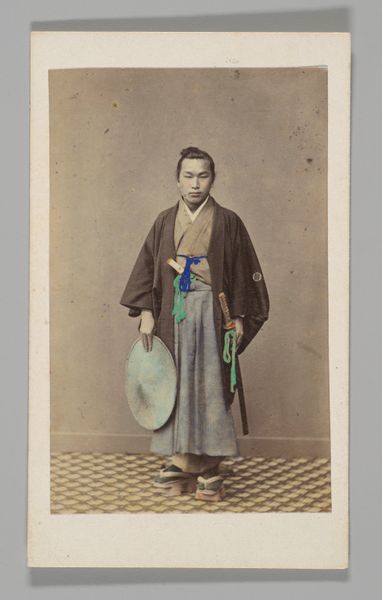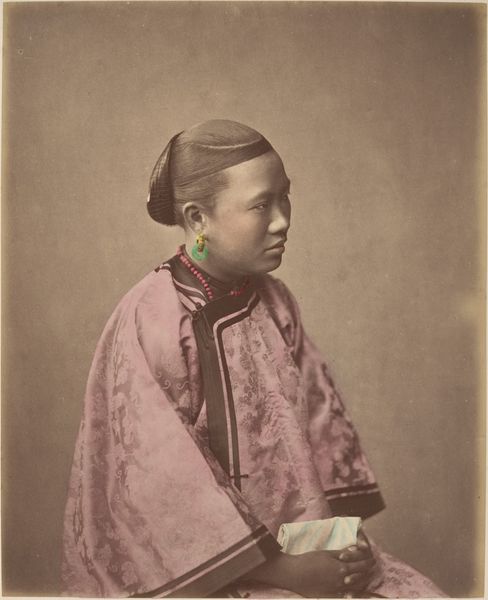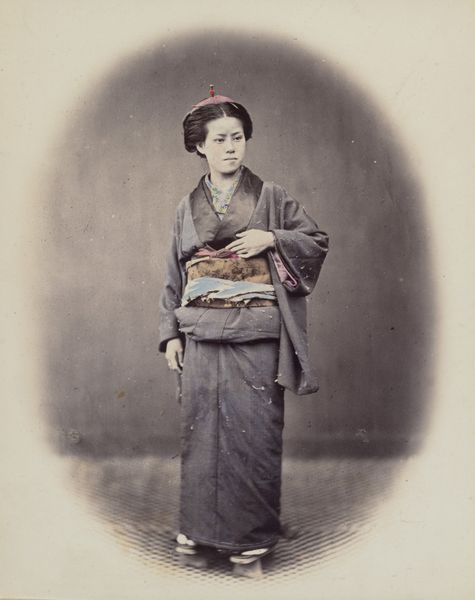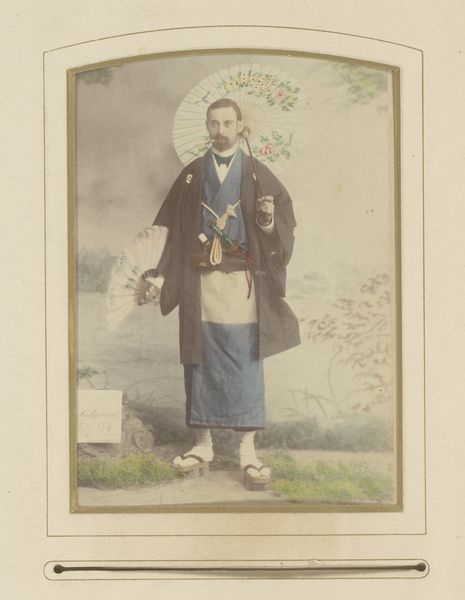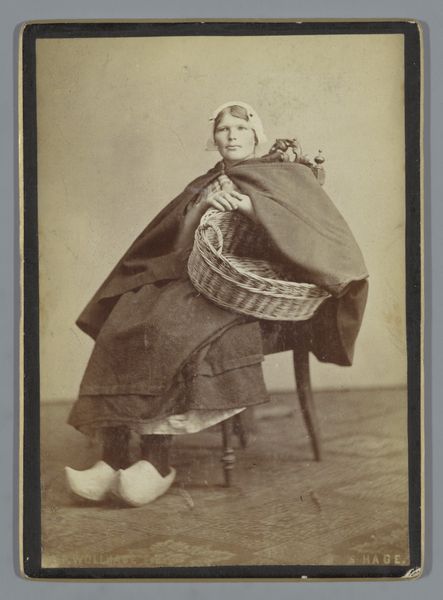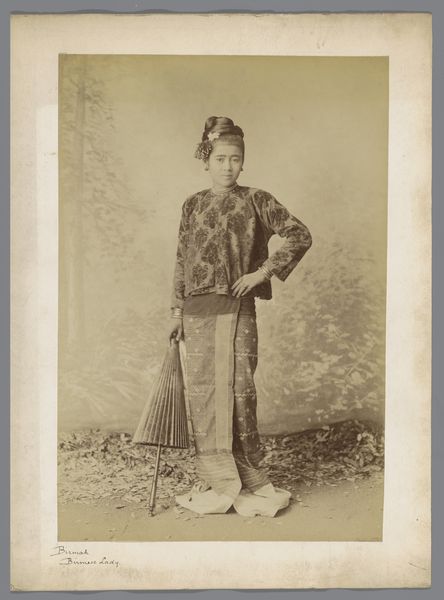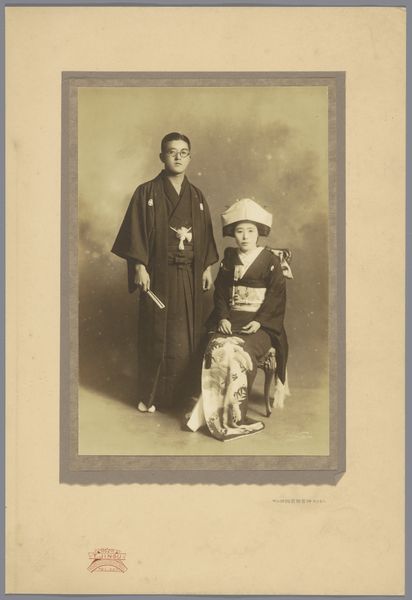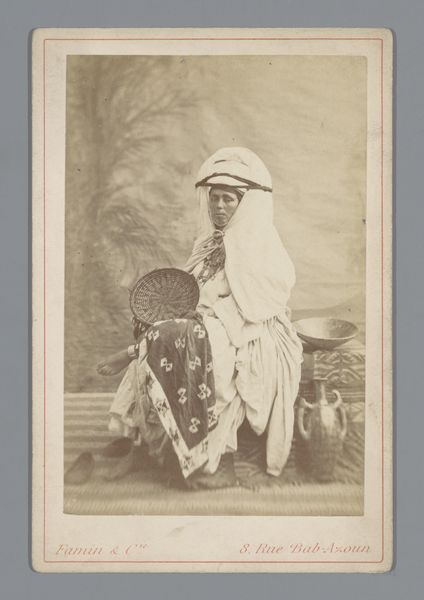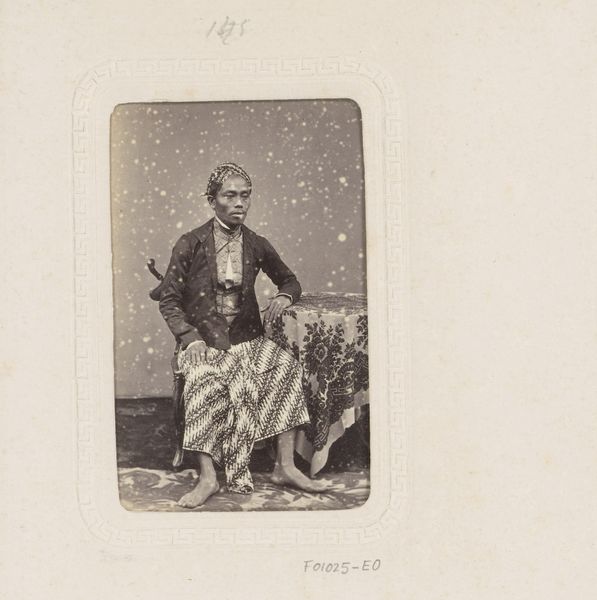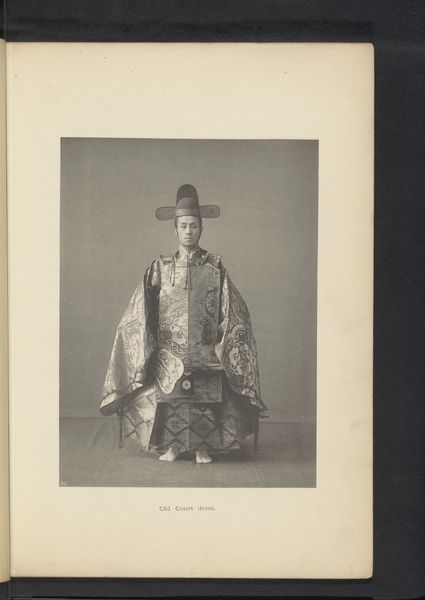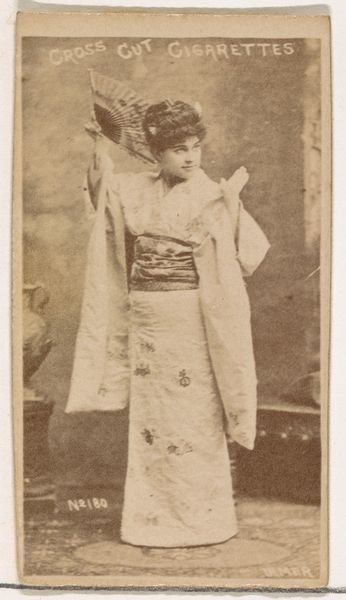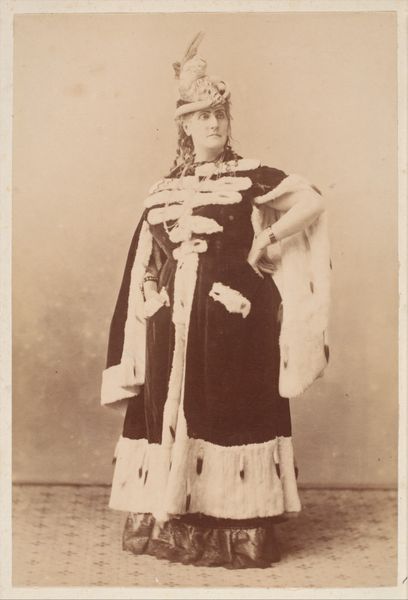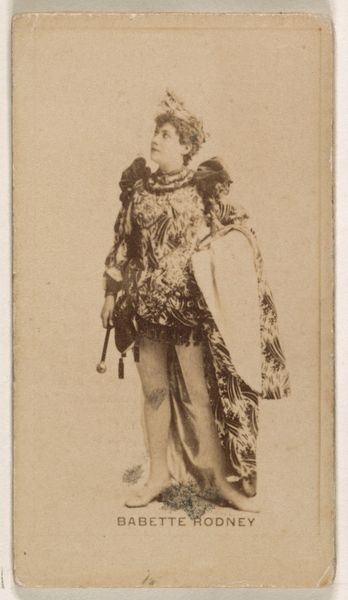![[Japanese High Priest in Full Canonicals] by Felice Beato](/_next/image?url=https%3A%2F%2Fd2w8kbdekdi1gv.cloudfront.net%2FeyJidWNrZXQiOiAiYXJ0ZXJhLWltYWdlcy1idWNrZXQiLCAia2V5IjogImFydHdvcmtzLzljNzY2OWIwLTRhMTctNDE0Zi1iYjU4LTUzZmE1MTUxMDNmNS85Yzc2NjliMC00YTE3LTQxNGYtYmI1OC01M2ZhNTE1MTAzZjVfZnVsbC5qcGciLCAiZWRpdHMiOiB7InJlc2l6ZSI6IHsid2lkdGgiOiAxOTIwLCAiaGVpZ2h0IjogMTkyMCwgImZpdCI6ICJpbnNpZGUifX19&w=3840&q=75)
daguerreotype, photography
#
portrait
#
asian-art
#
daguerreotype
#
photography
#
men
#
watercolour illustration
Dimensions: Image: 8.7 x 5.6 cm Mount: 10.5 x 6.2 cm
Copyright: Public Domain
Editor: Here we have *Japanese High Priest in Full Canonicals*, a hand-colored daguerreotype created in 1869 by Felice Beato, now residing at the Metropolitan Museum of Art. The formality of the portrait, along with the striking detail in the robes, gives the image a sense of both authority and mystique. What visual elements stand out to you? Curator: Initially, the contrasting textures arrest the eye. The smooth skin of the subject plays against the elaborate embroidery of the outer robe. And consider the linear effect achieved by the arrangement of the folds in the cloth. How would you describe the photographer’s handling of light and shadow? Editor: There’s a very subtle gradation, almost a diffused quality to the light, which softens the subject’s features while enhancing the textile patterns. It makes it difficult to know exactly what materials we’re viewing. How does that indistinct materiality affect the viewer's interpretation, in your opinion? Curator: The ambiguity, I believe, heightens the sense of ritual. The material recedes in its tangible reality to instead symbolize status and role, prompting viewers to ask whether that role is itself defined or obscure. Is this how one encounters faith? Editor: That’s an interesting observation about faith. Curator: One is tempted to see how meaning becomes less about the 'what' of the figure and more about the structural, aesthetic effect it carries. A matter of seeing a figure reduced to formal play—the intersection of line, shape, and colour. Do you perceive any symbolic purpose in the composition? Editor: Not immediately. It prompts more questions than it answers for me. Curator: Indeed. In the end, such a visual deconstruction prompts continued conversation, rather than settles into simple knowing.
Comments
No comments
Be the first to comment and join the conversation on the ultimate creative platform.
